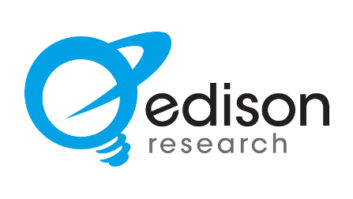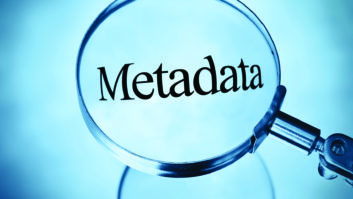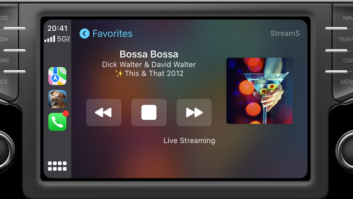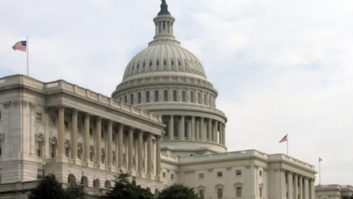Verification Technologies Spring Up to Serve Advertisers, PDs & Licensing Groups
BERWYN, Pa. The monitoring companies at the forefront of bringing “audio watermark” and “digital fingerprint” technology to new applications in broadcast say their spot verification processes are replacing older manual methods and that broadcasters and advertisers will benefit from using their media tracking services.
However, more-accurate spot detection will place pressure on radio traffic departments to improve reporting and eliminate discrepancies, advertising industry sources say.
Most radio networks and major advertisers at one time relied exclusively upon affiliate commercial clearance reports or costly, labor-intensive manual methods for spot verification. But since the mid-1990s, technology has developed allowing for real-time spot verification, reporting and data collection via the Web and virtual private networks.
Monitoring companies such as Media Monitors Inc., Audible Magic Corp., ConfirMedia and Mediaguide track content of radio stations nationwide via remote listening stations and then report when a commercial ran and whether it was the right version.
Some companies use audio watermarking, which requires the participation of advertising clients and broadcasters to encode material with a “watermark,” a unique and inaudible code in radio commercials. Other companies are using audio recognition technology, known as fingerprinting, which requires no encoding and uses only tiny bits of identifying audio features that are mapped and coded for comparison.
Accountability
The progress in monitoring technology has coincided with a spot verification initiative launched in 2003 by the American Association of Advertising Agencies to address growing concern within the advertising community with what it calls “verification discrepancies.”
AAAA President O. Burtch Drake has said the verification issue “lies at the very heart of a pact between an agency and its client. Our goal is to ensure the correct creative airs when and where it is scheduled.”
Gary Fries, president and CEO of the Radio Advertising Bureau, stated, “Accountability is a huge issue with advertisers who have to answer to their CFOs and accountants how and where every dollar is spent. This puts pressure on agencies and ultimately the media to verify that the spot ran when it was supposed to.”
The efforts of major radio groups and rep firms to move into electronic data invoicing, or EDI, will go a long way toward changing the perception among advertisers, Fries said.
“Accountability is the major issue with broadcasting. In particular, radio is viewed as an imperfect media right now,” said George Searle, CEO of Mediaguide. Radio, he said, “certainly delivers many benefits, but it is the most fragmented and most difficult of the media to measure, data-wise.”
Searle said Mediaguide collects data that allows advertisers and their agencies to understand the return on their investment and why it is worthwhile.
Mediaguide’s passive monitoring technology checks audio from 2,000 radio stations in approximately 200 markets, typically without them knowing they are being monitored, Searle said.
Mediaguide has unmanned workstations with racks of electronics equipment in data centers across the country, Searle said. The company’s headquarters in Berwyn, Pa., is the main hub for the spot verification system.
“The first step is content fingerprinting. That happens prior to broadcast (in Berwyn) during content registration. Clients send us the spot and we create a uniquely robust fingerprint … preserving important characteristics to make identification.”
That data is uploaded to the remote listening stations, Searle said, joining millions of other audio fingerprints that Mediaguide has in memory.
Searle said computers in the data centers record continuous broadcast audio and scan content for the digital fingerprints that match with ones already stored in its memory without having to encode the content.
“As a station is monitored, creative is recognized in seconds. We log the time, date and station of the detection. That data is shipped over a virtual private network to Berwyn where we aggregate all of the codes for our reports,” Searle said.
Arbitron began using Mediaguide’s broadcast monitoring technology for its RADAR radio network ratings service this spring. Searle said Arbitron had used a manual process to monitor about 600 stations. The sample has increased to more than 1,200 stations since the switch, he said.
ASCAP, the performing rights organization, and ConneXus Corp. formed Mediaguide in 2002 to develop a service for better tracking of ASCAP member performances and airplay on TV and radio, Searle said. “Spot monitoring has been an offshoot of that,” he said.
Royalty distribution and piracy detection were the intended uses for much of the Web technology being deployed by monitoring companies, Searle said.
‘Truly third-party’
Monitoring services say the results help broadcasters and radio networks maximize revenues by tracking client spots on competitors and determining what buys they are missing. The data also give broadcasters the ability to show clients exactly when their spots aired.
Media Monitors Inc., a subsidiary of RCS, inked a deal in June with broadcaster Radio One Inc., to provide same-day data via its AirCheck product.
Radio One COO Mary Catherine Sneed stated, “Being able to see spot breaks on key stations in a market helps us create better sales strategy and provide our advertisers with verification that their spots ran.”
With automated listening stations in the top 25 markets, Media Monitors uses a secure virtual private network to transport data from listening sites to its data center in White Plains, N.Y., said President Philippe Generali.
“We believe the only viable technology is fingerprinting technology. We do not have to ask anyone’s help. Not the broadcasters, not the advertiser or the creator of the spot. This is truly third-party spot verification,” Generali said.
AirCheck uses software that summarizes the audio signal from a radio station at each listening post, and according to the cut’s characteristics, creates a matrix of sorts. By saving only key parts of each element, an entire day’s worth of identifiable audio typically amounts to less than 2 MB, Generali said.
The only manual part of the process is when a commercial is heard for the first time and cannot be identified by the company’s computer software, Generali said.
“When a brand-new commercial is heard and we can’t identify it, we have individuals in our data center who lift the broadcast signature or fingerprint of a spot. We therefore can go back and determine how much it has played in the past. We have a library of millions of fingerprints,” Generali said.
Several monitoring companies, including ConfirMedia, use digital audio watermark technology. The embedding of unique and inaudible codes in commercials is performed directly into an audio waveform by introducing minute alterations to the waveform that are transparent to the user, according to the company.
AudioAudit, which offers cable and television spot monitoring, is in the development stages of a radio verification service, said Richard Alcott, executive vice president of marketing for AudioAudit. The company plans a late 2004 launch of its radio monitoring software.
“We have been quietly testing within the radio industry. There is a need on the part of our clients to answer the question, ‘Did the broadcaster air what they were supposed to air?'”
Alcott said the monitoring company would introduce both a watermark and an audio recognition fingerprint technology by the end of the year.
Another company ready to enter the radio spot verification business is Mediabase, a division of Premiere Radio Networks. It monitors radio record airplay on 1,100 radio stations in 140 markets.
“We are well into the test phase of a product for identifying spots. While it is relatively easy to monitor national and network spots, the challenge is to include important local advertisers in the data,” said Rich Meyer, president of Mediabase.
Meyer declined to identify the technological underpinnings and infrastructure of Mediabase’s monitoring system, saying they are confidential. He would only say Mediabase uses a three-way monitoring system with built-in redundancies.












